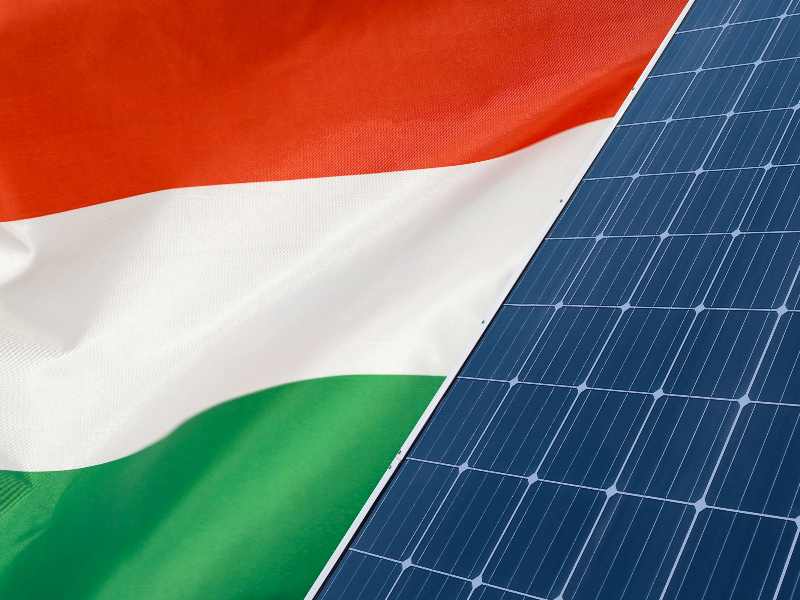
The IEA has released its annual review of Hungary’s energy policy, outlining the current state of renewable generation within the country’s energy mix and outlining recommendations for the country to hit its net zero targets.
According to the Hungary 2022 Energy Policy Review, the country has significantly increased its climate ambitions since their last review, although a boost is still needed in renewables generation to meet targets.
The major priorities for Hungary’s climate and energy policies relate to energy security, reducing fossil fuel use and keeping energy prices affordable.
Some key recommendations include:
• In line with the REPowerEU, the net zero target and Fit for 55 package, adopt increased ambitions on renewables and low-carbon technologies and strengthen the 2030 greenhouse gas and sectoral emissions targets
• Update the National Energy and Climate Plan and the policies and measures required
• Prioritise investments in domestic low-carbon energy sources by removing all barriers to the roll-out of renewable electricity and its system integration through increased energy storage and demand response
• Reduce demand for and consistently diversify supply sources of crude oil and natural gas
Low-carbon generation
According to the report, renewable energy has seen remarkable growth in the country thanks to the introduction of the new renewable energy tenders (METÁR), with strong performance of solar photovoltaic (PV).
In line with net zero ambitions, Hungary targets a low-carbon electricity mix of 90% by 2030, with new nuclear and renewables to play a major role. The country has also focused on maintaining its nuclear generation capacity.
Going forward, efforts are needed to boost the share of renewables in gross final consumption. In light of higher EU-wide ambitions, Hungary is also considering raising its 2030 target for renewables in final consumption to a higher level of 23% or even 25%, banking on strong solar PV.
Renewable generation
Hungary still has untapped potential in developing geothermal and wind power.
Faster progress in renewable energy deployment may allow Hungary to close its last coal-fired power plant ahead of time by 2025. It would also mitigate possible delays at the new NPP (Nuclear Power Plant) project Paks II and support an alternative strategy for Hungary in the coming years.
Hungary plans to phase out coal use for electricity generation by 2030, or if possible by 2025 if the government can timely facilitate the “just transition” by shifting direct and indirect jobs in lignite mining and lignite-fired power generation at Hungary’s last coal station, the Mátra plant, to other energy supplies. The government also supports efforts to replace imported coking coal with low-carbon fuels in the future.
Hungary’s NCDS (National Clean Development Strategy of 2021) expects technologies, such as carbon capture, utilisation and storage (CCUS) and hydrogen to become available after 2030 but before 2040.
Up to 2030, Hungary plans to produce 20 000 tonnes (t) per year of hydrogen via steam methane reforming of fossil fuels and 16 000 t per year of hydrogen produced from solar PV, with some pilot projects under way, such as the Aquamarine project. The country also has a modest ambition to install 240MW of electrolyser capacity by 2030, whereas EU countries on average target capacity at gigawatt scale.
Hydrogen and nuclear
Building on the IEA review and in the context of the REPowerEU, Hungary has shifted gear in 2022 and is advancing its hydrogen ambitions by one decade to develop hydrogen for its transport and hard-to-abate sectors.
Among IEA countries, Hungary has the third-highest share of nuclear, after France and the Slovak Republic. Thanks to the recently completed lifetime extension of the existing units at the Paks NPP beyond the initial 30 years for another 20 years (between 2032 and 2037), nuclear power can maintain its role in the mix.
The planned construction of two additional units at the Paks site based on Russian investment may face significant delays. Hungary needs to increase its efforts to avoid an increase in power sector emissions after 2030 and ensure reliable dispatchable capacity. Lifetime extensions of existing reactors should be considered.
The next iteration of Hungary’s NECP is an opportunity to update these actions, including by:
• reinforcing energy efficiency measures
• accelerating deployment of diverse renewable energy sources and examining lifetime extensions of existing nuclear reactors
• considering early action on CCUS and hydrogen during the 2030s with dedicated investment schemes.
Attila Steiner, Hungary’s state secretary for energy and climate policy, stated: “Hungary has a strong commitment to renewables. As the next step, the government’s priority is to upgrade the national grid to be capable of integrating the rapidly growing electric capacity generated by weather-dependent energy sources. However, to guarantee supply security and reach our ambitions climate goals, it is imperative to maintain or even increase our reliable and emission-free nuclear capacity as well.”
“A stronger focus on investment in clean energy technologies is critical,” added IEA executive director Fatih Birol as the organisation released the policy review.
“Hungary has a huge opportunity to develop hydrogen for industrial sectors. Continued investment in developing its solar PV, geothermal and wind resources will allow Hungary to reduce its reliance on natural gas and coal in both heating and power generation. Hungary possesses the technologies it needs to advance its transition toward a clean and more secure energy system, which in turn will improve regional energy security.”